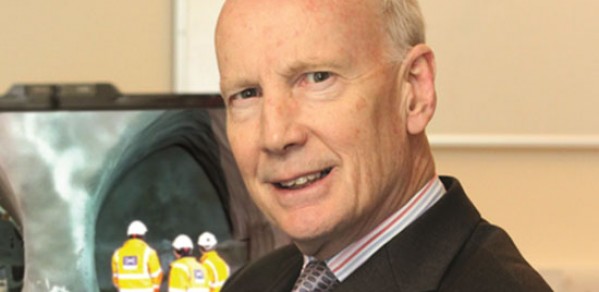
High-quality infrastructure, such as tunnels, bridges, roads, railways, buildings and utilities, is essential for supporting economic growth and productivity. It attracts globally-mobile businesses and promotes social well-being, says the head of the Cambridge Centre for Smart Infrastructure and Construction (CSIC), Professor Robert Mair.
There are real opportunities for new technologies to make radical changes to the construction and management of infrastructure, leading to considerably enhanced efficiencies, economies, resilience and adaptability.
Professor Robert Mair, Head of CSIC
Modern construction and infrastructure must be robust, resilient and adaptable. It also needs to be optimised in terms of efficiency, cost, low carbon footprint and service quality.
There is a compelling need for change. The UK construction industry is seen as expensive, often late and of mixed quality, at odds with ‘new and fast’ technology sectors, having a fragmented supply chain and being resistant to innovation.
An estimated 109m tonnes of construction and demolition waste is produced annually – three times the amount produced by UK households.
These reasons have made transformation of the construction industry difficult but innovation is now driving developments.
There are real opportunities for new technologies to make radical changes to the construction and management of infrastructure, leading to considerably enhanced efficiencies, economies, resilience and adaptability.
Modern infrastructure and construction can benefit enormously from the innovative use of emerging technologies in sensor and data management, such as fibre optics, Micro Electro Mechanical Systems (MEMS), computer vision, power harvesting, radio frequency identification (RFID) and wireless sensor networks.
That innovation is upon us. The Cambridge Centre for Smart Infrastructure and Construction (CSIC), funded by EPSRC, TSB and industry, has been active on more than 40 construction sites in the UK. On the Crossrail project, CSIC has been involved on four sites, principally in the implementation of fibre optic sensing to measure the performance of shafts and deep excavations - Pudding Mill Lane, Limmo Shaft, Stepney Green Crossover and Paddington Station. A novel wireless sensor network has also been installed in the deep excavation for Paddington Station.
Working with the Knowledge Transfer Partnership (KTP) Associates (employed by Cambridge University and funded by both Crossrail and TSB), CSIC has led the development and installation of optical fibre and other monitoring instrumentation on the four Crossrail sites.
The monitoring data has provided new insights into the behaviour of the shaft lining and ground movements adjacent to the shaft during construction. It highlighted the generally conservative nature of the design of the shafts and retaining walls – with only very small wall strains and deflections being recorded by the fibre optics. It has also shown much smaller ground movements than predicted.
CSIC has successfully installed optical fibre sensors on the diaphragm wall reinforcement cages at the Crossrail sites and robust installation techniques for achieving reliable measurements have been developed. This work has important implications for industry.
The fibre optic monitoring by CSIC on the Crossrail sites has demonstrated the potential economic benefits that could be achieved with refined designs. Rationalisation of the design approach for shafts and retaining walls will benefit the wider construction industry. A more efficient design approach should result in reduced amounts of material used and a faster construction process. Such innovations will transform the construction and management of infrastructure, and enhance and help sustain our future.
This article was written by Professor Robert Mair for Infrastructure Intelligence's magazine and the original article can be viewed here.

